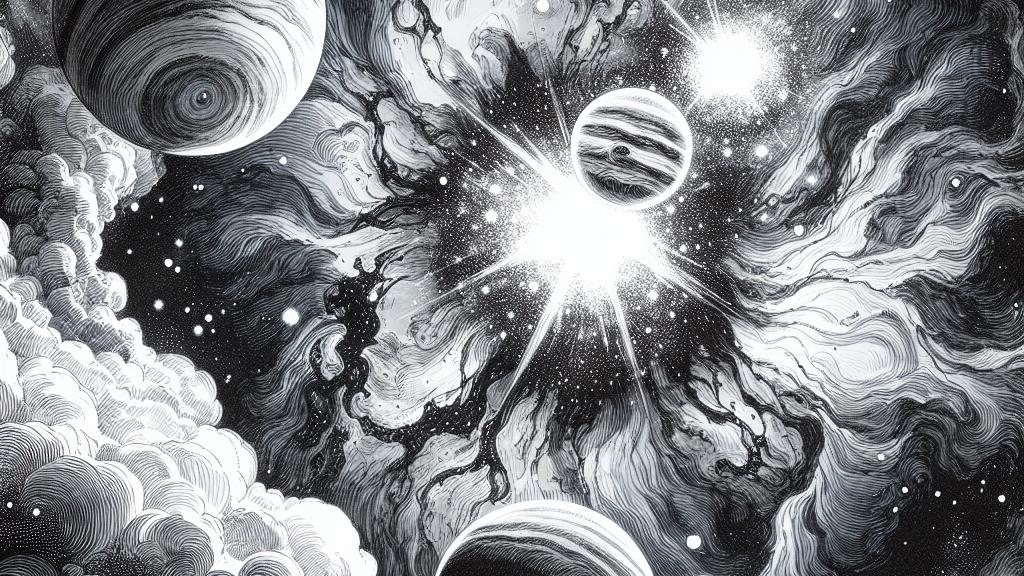New Insights into the Formation of Jupiter-Mass Binary Objects in the Orion Nebula
Overview
- Exciting new study uncovers critical insights into the formation of Jupiter-mass binary objects (JuMBOs) hidden within the breathtaking Orion Nebula.
- The innovative theory of photoerosion reveals how powerful radiation from massive stars inhibits JuMBO growth, transforming our understanding of these cosmic entities.
- These groundbreaking findings hold the potential to revolutionize our comprehension of planetary formation and the dynamic processes that shape the universe.

Understanding JuMBOs
Deep within the mesmerizing Orion Nebula, located 1,300 light-years from Earth, astronomers have made a thrilling breakthrough concerning Jupiter-mass binary objects, or JuMBOs. This unique class of celestial pairs has baffled scientists for years, defying many established models of star and planetary formation. In a fascinating study led by Dr. Richard Parker and his motivated undergraduate student, Jessica Diamond, the two researchers shine a light on this cosmic mystery. They argue persuasively that traditional astronomical models fail to account for the existence of JuMBOs, prompting a reassessment of how we understand the interplay between various celestial objects in the vast universe.
The Photoerosion Theory
Central to their findings is the captivating theory of 'photoerosion.' Imagine this: JuMBOs initially develop in ways strikingly similar to stars. However, the growth of these fascinating objects is significantly stunted by the intense radiation emitted from nearby massive OB stars. This radiant force acts like a cosmic sculptor, chiseling away the hydrogen gas enveloping the JuMBOs, thus hindering their growth and leading to the formation of remarkable binary systems. Dr. Parker and Diamond not only update existing theories but also stress how external forces—from light to gravity—interact to craft these elusive, low-mass objects, inviting us to consider the intricate dance of creation in the cosmos.
Ongoing Research and Implications
Although this pioneering research greatly enhances our understanding of JuMBO formation, it also opens a Pandora's box of intriguing questions waiting to be explored. The stunning insights gained from the James Webb Space Telescope fuel an insatiable curiosity, urging astronomers around the world to dive deeper into the mysteries surrounding these captivating entities. For example, do JuMBOs provide clues to the conditions essential for life in distant worlds? Are they merely rogue planets wandering through space, or could they be instrumental in shaping their stellar environments? As investigations progress, these newfound revelations could compel us to reevaluate our fundamental understanding of astrophysical processes, reshaping the narrative of cosmic evolution and revealing more about the intricate tapestry of our universe.

Loading...